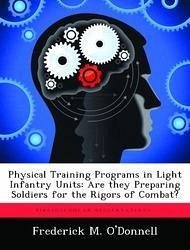Nicht lieferbar

Light Infantry Battalion Night Attack: Command and Control System, Strengths and Weaknesses
Versandkostenfrei!
Nicht lieferbar
This monograph addresses the question: What are the strengths and weaknesses of the command and control system of a light infantry battalion which is conducting a night attack? To address this question, this monograph uses the following methodology. First, it develops working definitions of command and control and the command and control system. Next, it examines two examples of night attacks--one successful, the other unsuccessful--to determine the command and control factors that led to success in the first and failure in the second. Then, using the definition of the command and control syst...
This monograph addresses the question: What are the strengths and weaknesses of the command and control system of a light infantry battalion which is conducting a night attack? To address this question, this monograph uses the following methodology. First, it develops working definitions of command and control and the command and control system. Next, it examines two examples of night attacks--one successful, the other unsuccessful--to determine the command and control factors that led to success in the first and failure in the second. Then, using the definition of the command and control system, it briefly describes the physical composition of this system for the light infantry battalion. Its next step is to assess the strengths and weaknesses of the physical components of the command and control system of the light infantry battalion in their ability to perform the command and control factors of the night attack. Using the results of this assessment, it then draws conclusions and makes some recommendations on ways to improve the light infantry battalion command and control system when it conducts a night attack. This monograph draws the following conclusions. First, the leadership of the light infantry battalion will be its greatest strength during the night attack. Second, the light infantry battalion has a significant night vision capability, a strength for the night attack, but it can be improved. Third, the battalion has sufficient FM radios on the TOE to conduct a night attack, but the lack of radios in the scout squads hinders their ability to pass reconnaissance information necessary for preparing for the attack. Fourth, the capability to establish a TAC CP during a night attack will provide flexible control during the conduct of the attack. Finally, the battalion can significantly strengthen its capability to successfully execute a night attack if it develops and documents procedures, SOPS and techniques for quickly preparing warning orders and operations








